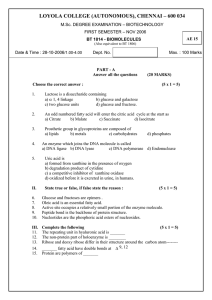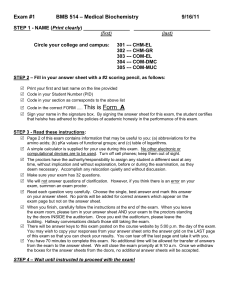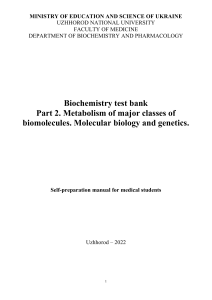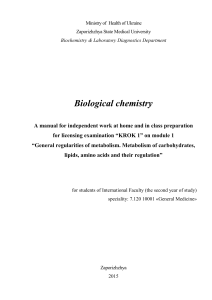BIOMOLECULE AND ENZYME TEST REVIEW
advertisement
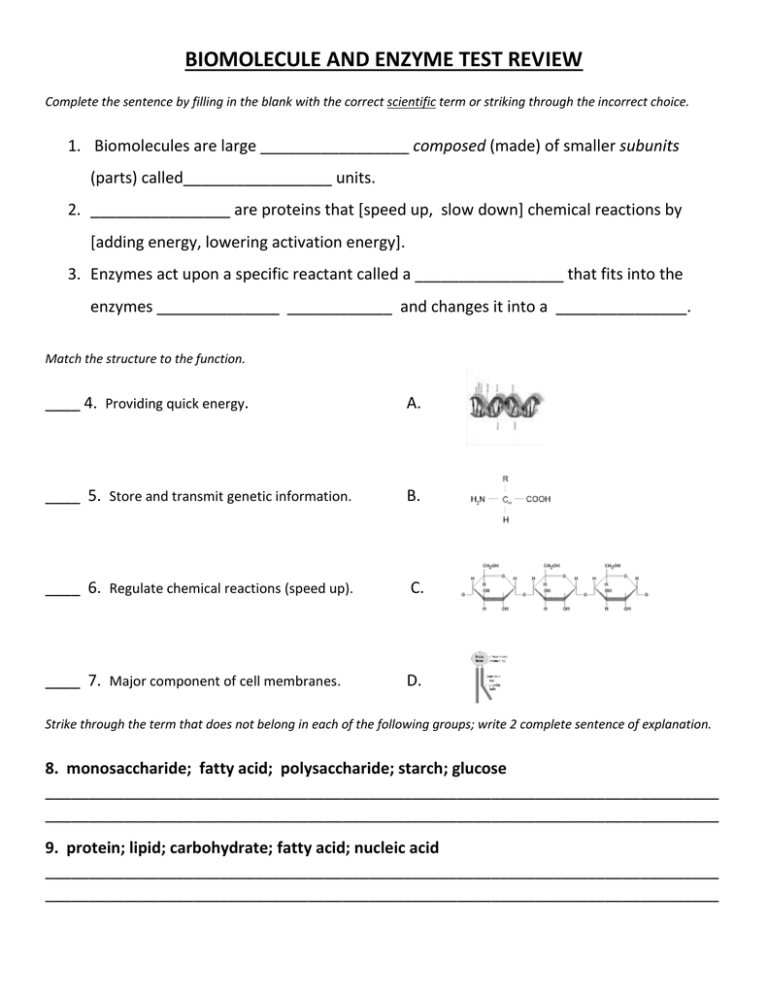
BIOMOLECULE AND ENZYME TEST REVIEW Complete the sentence by filling in the blank with the correct scientific term or striking through the incorrect choice. 1. Biomolecules are large _________________ composed (made) of smaller subunits (parts) called_________________ units. 2. ________________ are proteins that [speed up, slow down] chemical reactions by [adding energy, lowering activation energy]. 3. Enzymes act upon a specific reactant called a _________________ that fits into the enzymes ______________ ____________ and changes it into a _______________. Match the structure to the function. ____ 4. Providing quick energy. A. ____ 5. Store and transmit genetic information. B. ____ 6. Regulate chemical reactions (speed up). C. ____ 7. Major component of cell membranes. D. Strike through the term that does not belong in each of the following groups; write 2 complete sentence of explanation. 8. monosaccharide; fatty acid; polysaccharide; starch; glucose _____________________________________________________________________________ _____________________________________________________________________________ 9. protein; lipid; carbohydrate; fatty acid; nucleic acid _____________________________________________________________________________ _____________________________________________________________________________ 10. DNA; self replicating life; enzyme; nucleic acid; nucleotide _____________________________________________________________________________ _____________________________________________________________________________ 11. protein; enzyme; glucose; amino acid; catalase _____________________________________________________________________________ _____________________________________________________________________________ 12. nucleotide; amino acid; wax; monosaccharide; fatty acid _____________________________________________________________________________ _____________________________________________________________________________ 13. ear wax; bacon grease; muscle; butter; vegetable oil _____________________________________________________________________________ _____________________________________________________________________________ 14. Label the following diagram. On a separate sheet of paper describe the illustration. 15. Place a “dot” on each graph indicating where the enzyme is working most efficiently. On a separate sheet of paper explain why the enzyme function declines rapidly after that dot. 16. On a separate sheet of paper explain which enzyme (pepsin or trypsin) would function best in the stomach environment.

